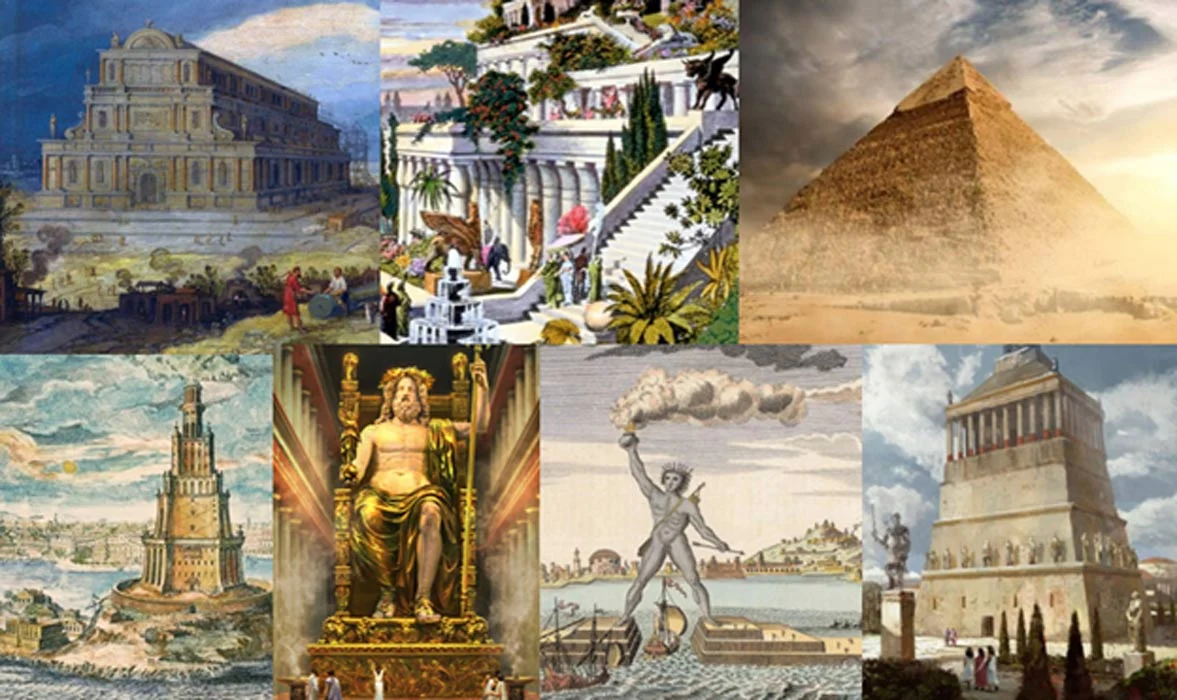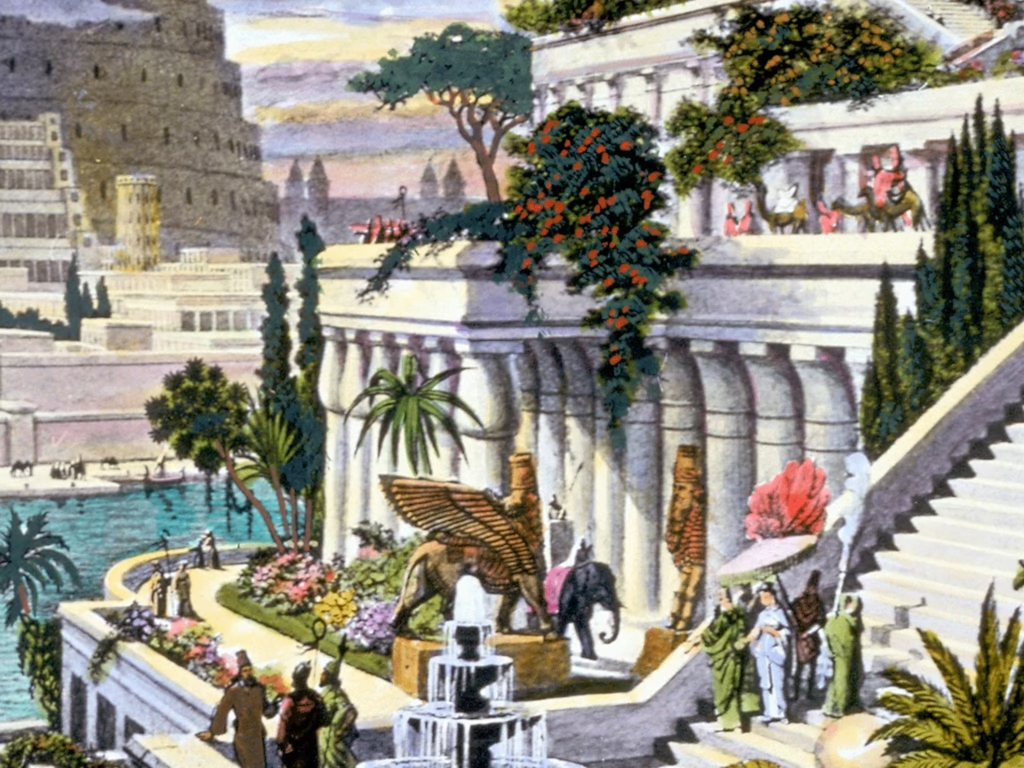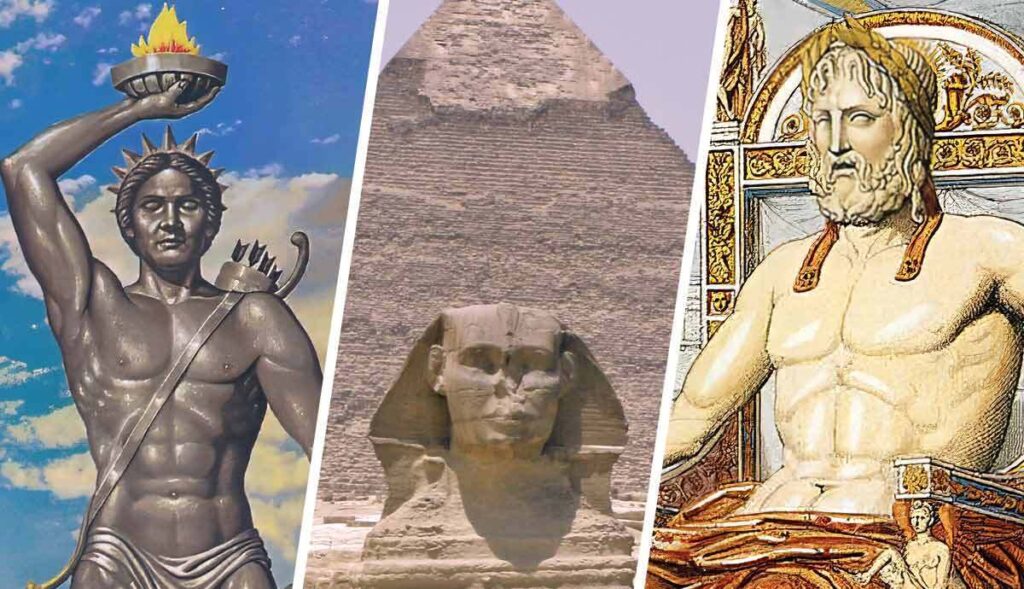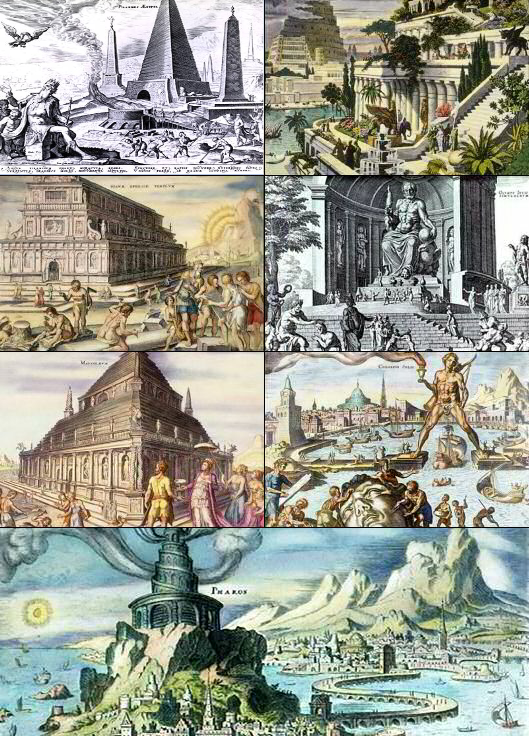“The Seven Wonders: Monuments of Mystery and Mastery”

The Seven Wonders of the Ancient World are legendary monuments that captivated the imagination of ancient travelers, poets, and scholars. Chosen by Greek historians as a kind of ancient “travel bucket list,” these marvels represented the greatest feats of architecture, engineering, and artistic achievement in the ancient Mediterranean and Near Eastern worlds.
Though most of these wonders no longer exist, their stories continue to inspire awe. Here’s a comprehensive look at the Seven Wonders of the Ancient World, their origins, significance, and enduring legacy.

🌟 1. The Great Pyramid of Giza (Egypt)
Built: c. 2560 BCE
Location: Giza Plateau, Egypt
Status: The only surviving wonder
The Great Pyramid of Giza, built as a tomb for the Pharaoh Khufu (Cheops), is the oldest and the only surviving wonder of the ancient world. Standing at 146 meters (originally), it remained the tallest man-made structure in the world for over 3,800 years.
Constructed with over 2 million limestone blocks—each weighing 2.5 to 15 tons—it’s a monumental achievement in ancient engineering. The pyramid’s alignment with celestial bodies and its precise construction continue to puzzle scholars and archaeologists.
🌿 2. The Hanging Gardens of Babylon (Iraq)
Built: 6th century BCE (reputedly)
Location: Babylon, near present-day Hillah, Iraq
Status: Lost or mythical
The Hanging Gardens were described as a breathtaking series of tiered gardens with exotic plants cascading over terraces, said to have been built by King Nebuchadnezzar II for his homesick wife, Amytis. Ancient writers like Strabo and Philo marveled at its beauty and engineering.
Though no definitive archaeological evidence has been found, the gardens symbolize the splendor and mystery of Mesopotamian civilization and may have been located elsewhere, or never existed as described.
🔥 3. The Statue of Zeus at Olympia (Greece)
Built: c. 435 BCE
Location: Olympia, Greece
Status: Destroyed
This colossal statue of Zeus, the king of the Greek gods, stood inside the Temple of Zeus in Olympia. Crafted by the sculptor Phidias, it was made of ivory and gold, towering over 12 meters (40 feet) tall.
The statue depicted Zeus seated on a grand throne, holding a scepter and a figure of Nike (Victory). It was celebrated for its majestic scale and artistic perfection but was destroyed sometime in the 5th century CE—possibly in a fire or during the closure of pagan temples.
🔥 4. The Temple of Artemis at Ephesus (Turkey)
Built: c. 550 BCE (rebuilt 323 BCE)
Location: Ephesus, near modern-day Selçuk, Turkey
Status: Destroyed
The Temple of Artemis was one of the largest temples in the ancient world and honored Artemis, the Greek goddess of the hunt. It was made of marble, measuring over 130 meters in length, and filled with sculptures and artworks.
Destroyed and rebuilt multiple times due to arson, flood, and invasion, it was ultimately reduced to ruins. Only foundations and a single reconstructed column remain today. It was considered one of the most beautiful structures ever built.
💥 5. The Mausoleum at Halicarnassus (Turkey)
Built: c. 350 BCE
Location: Halicarnassus (modern-day Bodrum, Turkey)
Status: Destroyed
Built as a grand tomb for Mausolus, a Persian satrap, and his wife Artemisia II, the Mausoleum at Halicarnassus was so magnificent that the word “mausoleum” became synonymous with monumental tombs.
The structure stood around 45 meters (148 feet) tall and combined Greek, Egyptian, and Lycian architectural elements. It was adorned with sculpted friezes and statues but was destroyed by a series of earthquakes during the Middle Ages.
🌊 6. The Colossus of Rhodes (Greece)
Built: c. 292–280 BCE
Location: Rhodes, Greece
Status: Destroyed
The Colossus of Rhodes was a giant bronze statue of the sun god Helios, built to celebrate Rhodes’ victory over Cyprus. It stood over 30 meters (100 feet) high, making it one of the tallest statues of the ancient world.
It collapsed during an earthquake around 226 BCE, only 56 years after its construction. Although it lay in ruins for centuries, its legend lived on and inspired the idea of monumental public art throughout history.
🔥 7. The Lighthouse of Alexandria (Egypt)
Built: c. 280 BCE
Location: Pharos Island, Alexandria, Egypt
Status: Destroyed
Also known as the Pharos of Alexandria, this lighthouse was built on a small island off the coast of Alexandria, guiding sailors safely into the busy harbor. It was estimated to be between 100 and 130 meters (330–430 feet) tall and used mirrors to reflect sunlight during the day and firelight at night.
It was damaged by several earthquakes between the 10th and 14th centuries and eventually disappeared. The lighthouse stood as a model for countless others for over a millennium.

🏛️ Why These Wonders?
The list of Seven Wonders likely originated from Greek scholars and travelers, such as Philo of Byzantium and Antipater of Sidon, who compiled the most impressive man-made structures known to them. These wonders represent not only human creativity and ambition but also the cultural values and technological limits of their time.
✨ Legacy of the Seven Wonders
Though only the Great Pyramid of Giza still stands, the concept of the Seven Wonders has endured for over 2,000 years. Their memory influenced Renaissance artists, inspired modern tourism, and led to the creation of newer “Seven Wonders” lists in our time.
Today, they symbolize the universal human desire to build, remember, and marvel—a reminder that even lost civilizations left behind footprints of greatness.





